Papers by Jose Alberto Cuminato
The problem proposed by the Tecumseh company consists in applying the Topology Optimization (TO) ... more The problem proposed by the Tecumseh company consists in applying the Topology Optimization (TO) methodology to improve the performance of an electromagnetic device. For convenience, this study focuses on modeling and developing numerical tools to optimize the core topology of an Electromagnetic Actuator (EA). The strategy is based on a TO framework that considers the magneto-static problem that governs the EA. The developed codes are written in Python and use the open-source library FEniCS to solve the Partial Differential Equations (PDEs), via the Finite Element Method (FEM), and the Method of Moving Asymptotes (MMA) algorithm as the optimizer.

Computer Methods in Applied Mechanics and Engineering
A topology optimization formulation including a model of the layer-by-layer additive manufacturin... more A topology optimization formulation including a model of the layer-by-layer additive manufacturing (AM) process is considered. Defined as a multi-objective minimization problem, the formulation accounts for the performance and cost of both the final and partially manufactured designs and allows for considering AM-related issues such as overhang and residual stresses in the optimization. The formulation is exemplified by stiffness optimization in which the overhang is limited by adding mechanical or thermal compliance as a measure of the cost of partially manufactured designs. Convergence of the model as the approximate layer-by-layer model is refined is shown theoretically, and an extensive numerical study indicates that this convergence can be fast, thus making it a computationally viable approach useful for including AM-related issues into topology optimization. The examples also show that drips and sharp corners associated with some geometry-based formulations for overhang limitation can be avoided. The codes used in this article are written in Python using only open sources libraries and are available for reference.
Department of Mathematics and Computer Science Universidade Estadual Paulista (UNESP), Presidente... more Department of Mathematics and Computer Science Universidade Estadual Paulista (UNESP), Presidente Prudente
Neural, Parallel & Scientific Computations archive, 2016
This note is concerned with the convergence of a finite difference scheme to the solution of a se... more This note is concerned with the convergence of a finite difference scheme to the solution of a second order ordinary differential equation with the right-hand-side nonlinearly dependent on the first derivative. By defining stability as the linear growth of the elements of the inverse of a certain matrix and combining this with consistency, convergence is demonstrated. This stability concept is then interpreted in terms of a root condition.
This work presents the development of a numerical technique for simulating two-dimensional viscoe... more This work presents the development of a numerical technique for simulating two-dimensional viscoelastic free surface flows of an Oldroyd-B fluid. The governing equations for an Oldroyd-B fluid are considered. The time derivative is approximated by a high order method. A novel formulation is developed for the computation of the non-Newtonian extra-stress components on rigid boundaries. The full free surface stress conditions are employed. The governing equations are solved by the finite difference method on a staggered grid. Numerical results demonstrating the capabilities of this numerical technique in solving two-dimensional flows of an Oldroyd-B fluid are given for a number of problems involving unsteady free surface flows. In addition, validation and convergence results are presented.
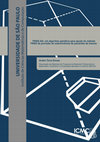
Dedico este trabalho aos meus pais, in memoriam, Alberto Ennes e Martilha Terra, que renunciaram ... more Dedico este trabalho aos meus pais, in memoriam, Alberto Ennes e Martilha Terra, que renunciaram a muito em suas vidas para dedicá-las aos filhos e que, mesmo com uma origem simples e de pouco estudo, nos deixaram um legado de muita sabedoria, honra e amor. Que Deus os tenha a Seu lado e me permita ser para eles motivo de orgulho. AGRADECIMENTOS Meus sinceros agradecimentos ao Prof. Dr. José Alberto Cuminato, pelo apoio e pela confiança no desenvolvimento deste trabalho. Agradeço novamente ao mesmo e também ao Prof. Dr. Afonso Paiva Neto, ao Prof. Dr. Rodrigo Fernandes de Mello e aos demais professores do ICMC, pela excelência no ensino e pela contribuição valiosa para o meu aprendizado. Agradeço também ao Prof. Dr. Eduardo do Valle Simões pela enorme colaboração no desenvolvimento deste trabalho. Apesar de não constar formalmente como orientador ou coorientador perante o programa, sua participação como mentor foi fundamental durante toda a pesquisa, sendo sua inclusive a concepção da ideia. Muito obrigado pelo apoio sempre muito próximo, disponível e amigável. Estendo meus agradecimentos ao Breno Cunha Queiroz, aluno do ICMC, pela valiosa ajuda na melhoria do desempenho e na solução de problemas nos códigos-fonte. Manifesto, finalmente, meus agradecimentos especiais à Sucocítrico Cutrale Ltda. e ao Sr. José Luis Cervato, diretor financeiro da empresa e meu superior durante o período em que fui colaborador na mesma, por me permitir e me incentivar a cursar o mestrado e perseguir este importante passo da minha formação.
Journal of Biomechanical Engineering
This note considers the mathematical model published in the Journal of Biomechanical Engineering ... more This note considers the mathematical model published in the Journal of Biomechanical Engineering by McKee et al. [McKee, S., Cuminato, J. A., Stewart, I. W., and Wheatley, D. J., 2021, “A Mathematical Representation of the Wheatley Heart Valve,” ASME J. Biomech. Eng., 143(8), p. 081006]. The model presented there suffers from the fact that there is a line discontinuity in the first derivative producing what appears to be a kink in each of the leaflets. This note is concerned with regularizing the shape of the valve while holding to Wheatley's essential idea [Wheatley, D. J., 2016, “Heart Valve,” U.S. Patent No. 9,259,313, UK Patent No. 2,982,340 (2017), European Patent No. 2,979,666 (2017)].
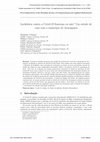
Proceeding Series of the Brazilian Society of Computational and Applied Mathematics, Dec 20, 2021
Resumo. O presente trabalho apresenta uma análise da evolução da Covid-19 no município de Araraqu... more Resumo. O presente trabalho apresenta uma análise da evolução da Covid-19 no município de Araraquara, localizado no interior do Estado de São Paulo. Essa análise tem como objetivo investigar a eficiência do lockdown como estratégia de contenção no avanço do novo coronavírus, através da análise dos dados de casos confirmados, internações,óbitos e do número efetivo de reprodução do vírus. Para isto, foi realizado um estudo comparativo envolvendo os dados do município de São Carlos-SP, bem como o número de novosóbitos por 100 mil habitantes dos municípios paulistas de Presidente Prudente, Dracena e Jaú que, assim como São Carlos, não implementaram um regime de lockdown permanente. Os resultados obtidos demonstram que a adoção de medidas mais rígidas de redução de circulação de pessoas foi capaz de diminuir significativamente os indicadores relativos a disseminação da Covid-19 em Araraquara. A partir da análise dos dados, foi também possível constatar que, no mesmo período em que osíndices da Covid-19 de Araraquara estavam em queda, o oposto ocorreu em São Carlos, que apresentou alta nosíndices. Além disso, em relaçãoà curva de novosóbitos ponderados por população, houve redução em Araraquara após o término do lockdown, e crescimento nos demais municípios analisados.
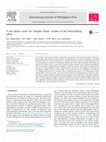
International Journal of Multiphase Flow, 2016
In this work a new two-phase solver is presented and described, with a particular interest in the... more In this work a new two-phase solver is presented and described, with a particular interest in the solution of highly elastic flows of viscoelastic fluids. The proposed code is based on a combination of classical Volume-of-Fluid and Continuum Surface Force methods, along with a generic kernel-conformation tensor transformation to represent the rheological characteristics of the (multi)-fluid phases. Benchmark test problems are solved in order to assess the numerical accuracy of distinct levels of physical complexities, such as the interface representation, the influence of advection schemes, the influence of surface tension and the role of fluid rheology. In order to demonstrate the new features and capabilities of the solver in simulating of complex fluids in transient regime, we have performed a set of simulations for the problem of a rotating rod inserted into a container with a viscoelastic fluid, known as the Weissenberg or Rod-Climbing effect. Firstly, our results are compared with numerical and experimental data from the literature for low angular velocities. Secondly, we have presented results obtained for high angular velocities (high elasticity) using the Oldroyd-B model which displayed very elevated climbing heights. Furthermore, above a critical value for the angular velocity, it was observed the onset of elastic instabilities driven by the combination of elastic stresses, interfacial curvature and secondary flows, that to the authors best knowledge, were not yet reported in the literature.
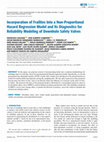
IEEE Access, 2020
In this paper, our proposal consists of incorporating frailty into a statistical methodology for ... more In this paper, our proposal consists of incorporating frailty into a statistical methodology for modeling time-to-event data, based on non-proportional hazards regression model. Specifically, we use the generalized time-dependent logistic (GTDL) model with a frailty term introduced in the hazard function to control for unobservable heterogeneity among the sampling units. We also add a regression in the parameter that measures the effect of time, since it can directly reflect the influence of covariates on the effect of timeto-failure. The practical relevance of the proposed model is illustrated in a real problem based on a data set for downhole safety valves (DHSVs) used in offshore oil and gas production wells. The reliability estimation of DHSVs can be used, among others, to predict the blowout occurrence, assess the workover demand and aid decision-making actions. INDEX TERMS Downhole safety valve, frailty model, generalized time-dependent logistic, hydrogen sulfide concentration, non-proportional hazard.
In this work, a new experimental device to visualize the filling of containers, under controlled ... more In this work, a new experimental device to visualize the filling of containers, under controlled and reproducible conditions, is described and employed to study the various phenomena that occur during container filling with Newtonian fluids. The experimental results displayed a variety of flow patterns, including the phenomenon of jet buckling. The results obtained experimentally were compared with the predictions given by the CFD code Freeflow3D. This code is based on the Marker-and-C ell technique and was able to handle properly all the issues of the system under study. The numerical results are in accordance with the movies recorded during the experimental runs and showed that the Freeflow3D code was able to predict the most relevant phenomena observed.
In this work we derive an exact solution for fully developed channel flows of viscoelastic fluids... more In this work we derive an exact solution for fully developed channel flows of viscoelastic fluids described by the linearized form of the SPTT (Simplified-Phan-Thien-Tanner) constitutive equation. We consider the governing equations for two-dimensional flows and employ the EVSS (Elastic-Viscous Stress-Splitting) transformation. We then apply the fully developed flow assumption and solve the resulting equations analytically and expressions for the velocity and the extra- stress tensor are given. We use this exact solution to validade a numerical method that simulates the flow in 2D channels using the SPTT constitutive equation.
Department of Mathematics and Computer Science, Instituto de Ciencias Matematicas e de Computacao... more Department of Mathematics and Computer Science, Instituto de Ciencias Matematicas e de Computacao (ICMC), Universidade de Sao Paulo (USP)
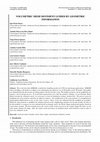
This work describes IDMESH, a method for handling meshes for CFD aircraft design applications. ID... more This work describes IDMESH, a method for handling meshes for CFD aircraft design applications. IDMESH allows modifing a 3D model according to new information provided on a set of 2D profiles of the 3D model. The profiles are obtained from the intersection of cutting planes with the aircraft’s wing. The profiles geometry can be modified by, for instance, inverse design process. To avoid mesh regeneration every time the geometry changes, we use Dynamic Mesh. Before moving the volumetric mesh, it is necessary to treat its boundaries (surface meshes) first. The process starts by modifying the wing geometry and then its adjacent surfaces. The modification of the wing geometry is acomplished by interpolating displacement vectors on the wing’s vertices. These vectors are obtained from the modified set of profiles. When the wing geometry is modified, the elements placed on the wing/fuselage junction can become invalid. In order to fix this problem, we propose two new methods based on dynami...
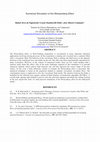
The Weissenberg effect, or Rod-Climbing experiment, is encountered in many important industrial a... more The Weissenberg effect, or Rod-Climbing experiment, is encountered in many important industrial applications involving mixing processes. In this experiment a rotating rod is inserted into a container filled with a viscoelastic fluid. The behavior of the viscoelastic fluid is striking, the fluid moves in the opposite direction of the centrifugal force and climbs up the rod. This effect has been experimentally reproduced by many researchers. However, in the context of numerical results, there are few works dealing with a rigorous study about this effect. One of the main challenges imposed in this simulation is to provide numerical methods which achieve high elasticity rate and that represent the correct shape of the free surface. In this work a finite difference scheme to simulate the Weissenberg effect is presented. The numerical technique is based on the projection method to simulate viscoelastic two-phase flows. The conformation tensor is employed to solve the viscoelastic fluid mo...
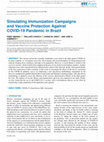
IEEE Access
The vaccine roll-out has currently established a new trend in the fight against COVID-19. In many... more The vaccine roll-out has currently established a new trend in the fight against COVID-19. In many countries, as vaccination cover rises, the economic and social disruptions are being progressively reduced, bringing more confidence and hope to the population. However, a crucial debate is related to fair access to vaccines, which would lead to stepping up the pace of vaccination in developing countries. Another important issue is how immunization has influenced the control of the infection, deaths, and transmissibility of the new coronavirus in these countries. In this work we investigate the effects of the rate of vaccination on the COVID-19 epidemic curves, by employing a new data-driven methodology, formulated on the basis of a modified Susceptible-Infected-Recovered model and Machine Learning designs. This data-driven methodology is applied to assess the influence of the vaccines administered in Brazil, on the fight against the virus. The impacts of vaccine efficacy and immunization speed are also explored in our study. Finally, we have found that the use of anti-SARS-CoV-2 vaccines with a low/moderate efficacy can be offset by immunizing a larger proportion of the population more quickly.
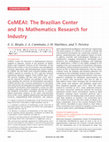
Notices of the American Mathematical Society
Paulo in São Carlos, is one of seventeen cross-disciplinary research, innovation, and disseminati... more Paulo in São Carlos, is one of seventeen cross-disciplinary research, innovation, and dissemination centers funded by FAPESP, the São Paulo state research funding agency. CeMEAI started its activities in 2011 and has received substantial financial support from FAPESP since 2013. The present funding will last until June 2018, and it can be renewed for another two periods of three years each, pending the outcome of international assessment. CeMEAI involves five research institutions in São Paulo state with twenty-five principal investigators, around forty associated researchers, fifteen postdocs, twenty-five PhD students, and some master's students. In total more than one hundred researchers contribute directly to technological innovation projects in the main concentration areas of the center: applied optimization and operational research, computational fluid mechanics, risk analysis,
Applied Numerical Mathematics, 2017
A new integration technique, which is suitable for integrands with multiple weak singularities, i... more A new integration technique, which is suitable for integrands with multiple weak singularities, is introduced. Local truncation errors are given. This scheme, when applied to the Beta function, is shown to emerge naturally from discrete fractional integration. To illustrate the effectiveness of the integration method a numerical example is provided, with somewhat unexpected convergence results.
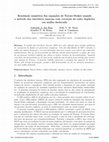
Proceeding Series of the Brazilian Society of Computational and Applied Mathematics, 2015
Resumo: O método das interfaces imersas (MII) tem sido utilizado para simular problemas de escoam... more Resumo: O método das interfaces imersas (MII) tem sido utilizado para simular problemas de escoamento de fluidos em geometrias complexas. Uma das dificuldades do MIIé calcular os saltos nos valores da função e em suas derivadas, pois nem sempre esses valores são conhecidos analiticamente. Em [4], foi desenvolvido um MII que calcula numericamente os saltos, por meio de um processo iterativo explícito que utiliza os pontos vizinhos da descontinuidade. Seguindo essa ideia, foi desenvolvida em [5] uma versão implícita não-iterativa desse método para resolver uma equação de Poisson. O presente trabalho apresenta a resolução das equações de Navier-Stokes, pelo método da projeção, usando o MII desenvolvido em [5] em variáveis primitivas e em uma malha deslocada. Palavras-chave: Navier-Stokes, malha deslocada, interface imersa, métodos de alta ordem.



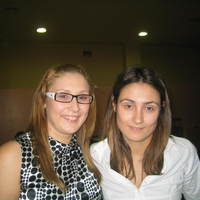


Uploads
Papers by Jose Alberto Cuminato